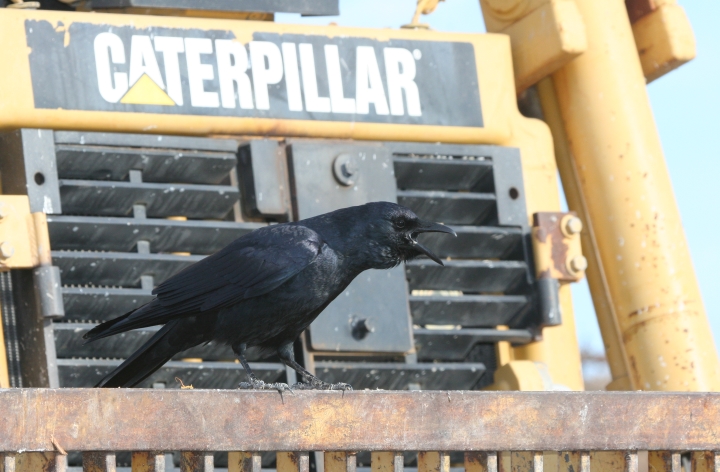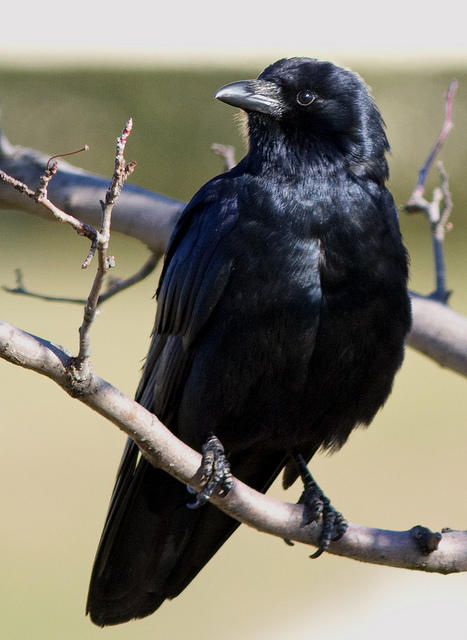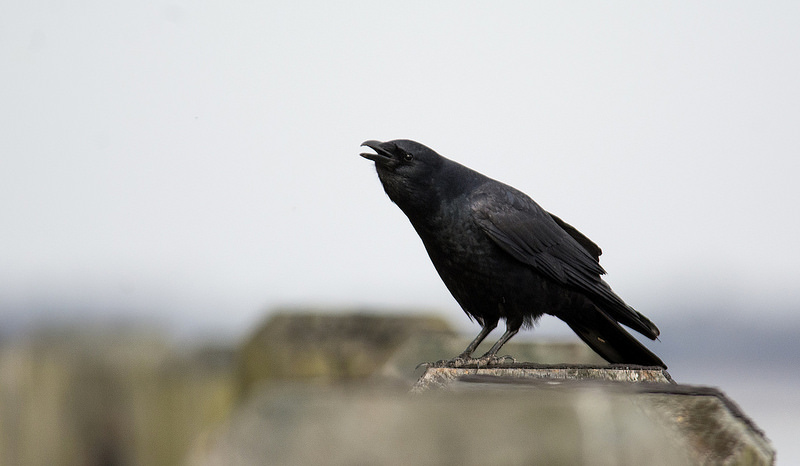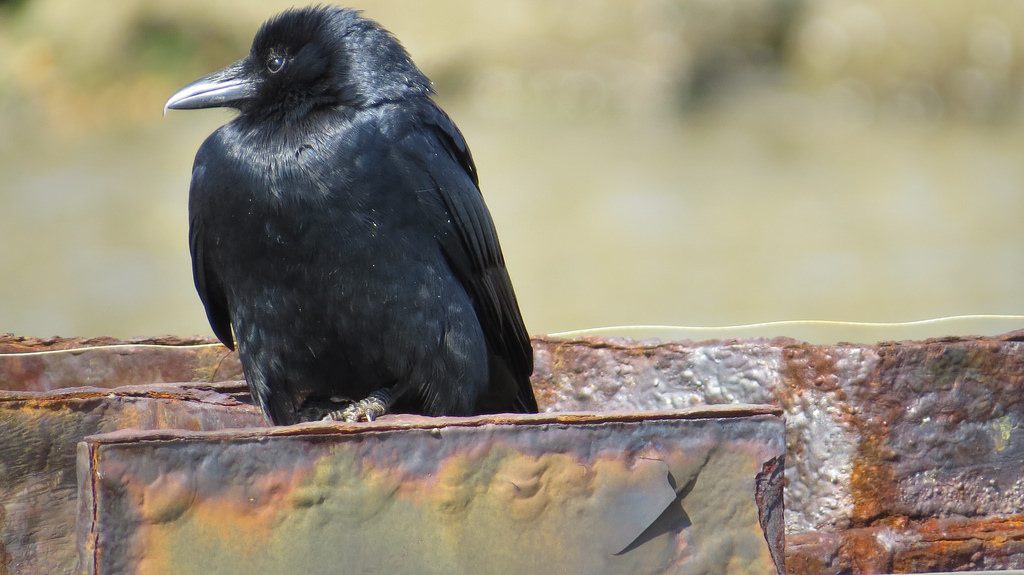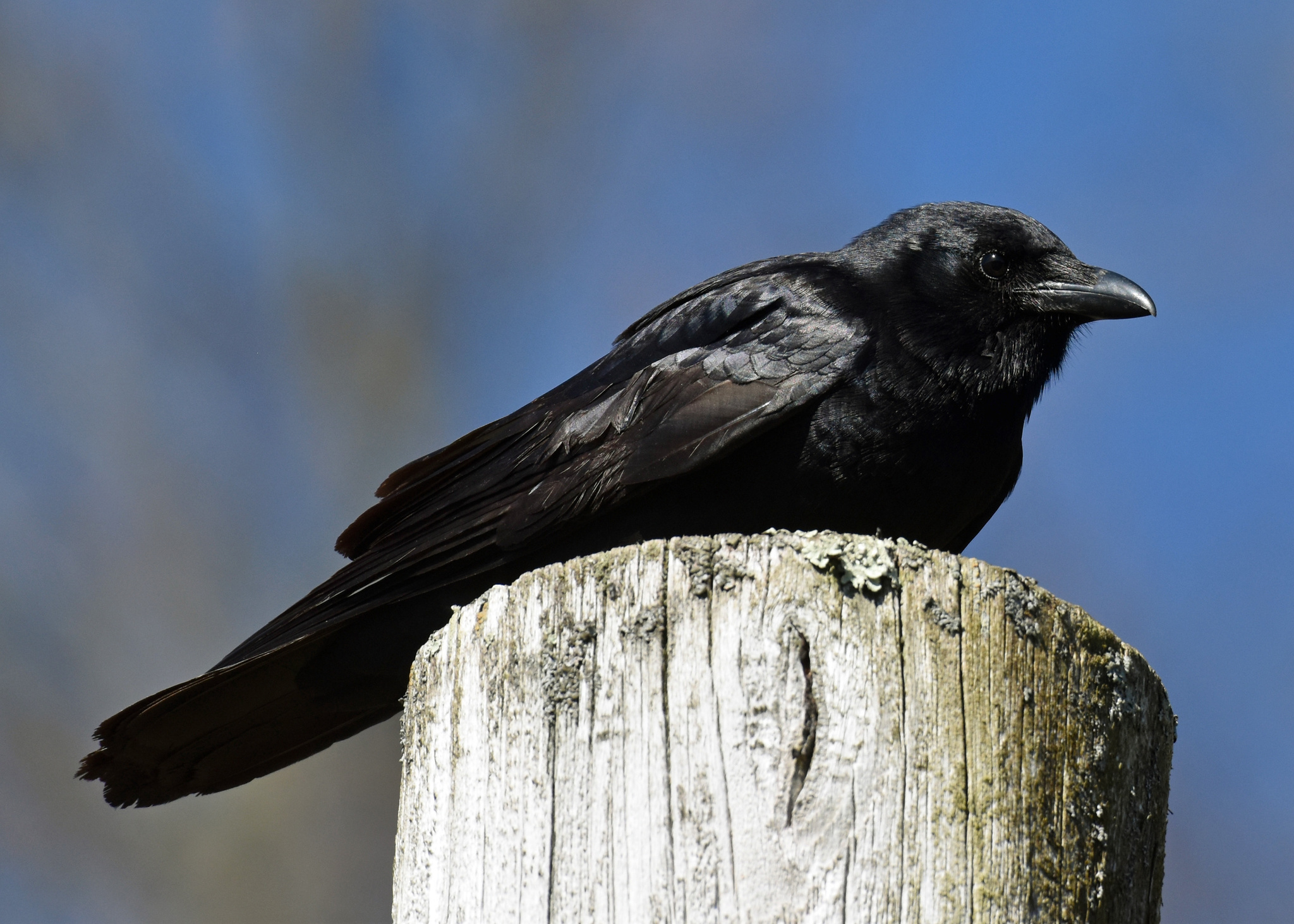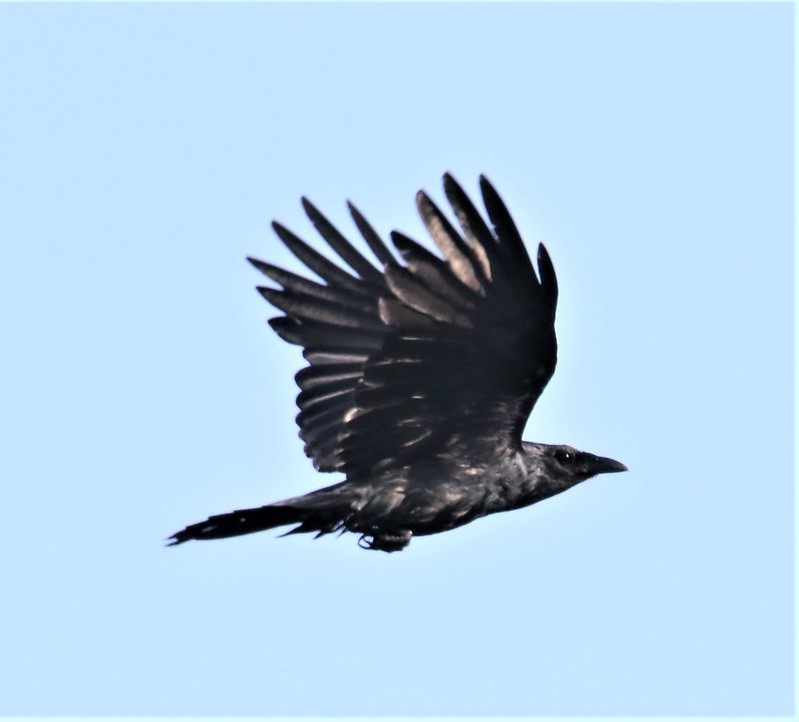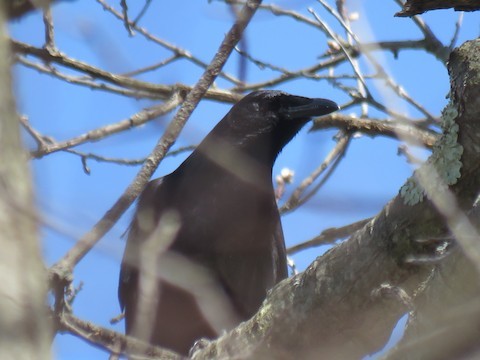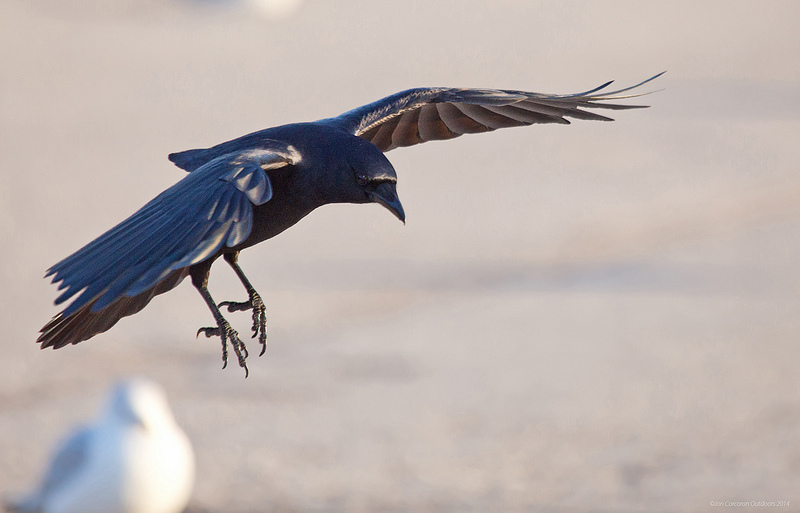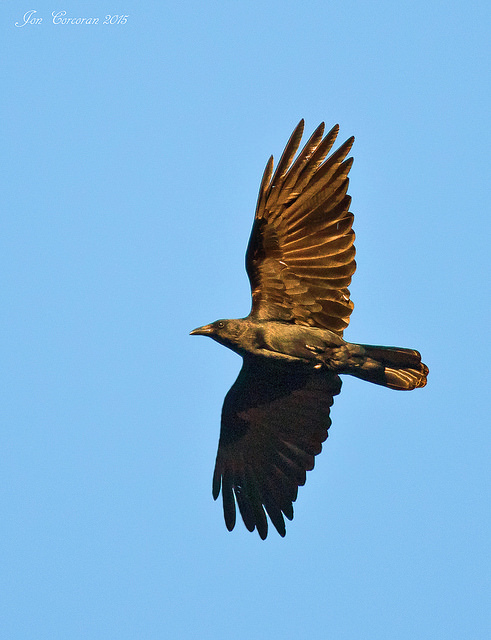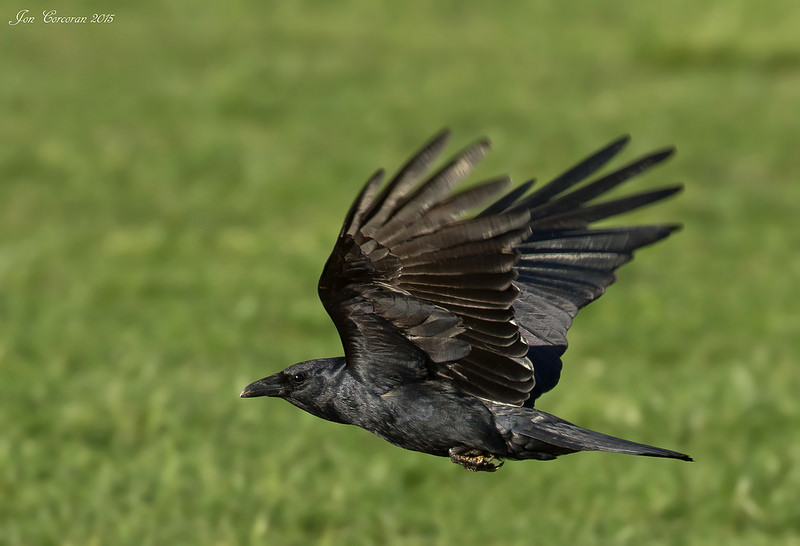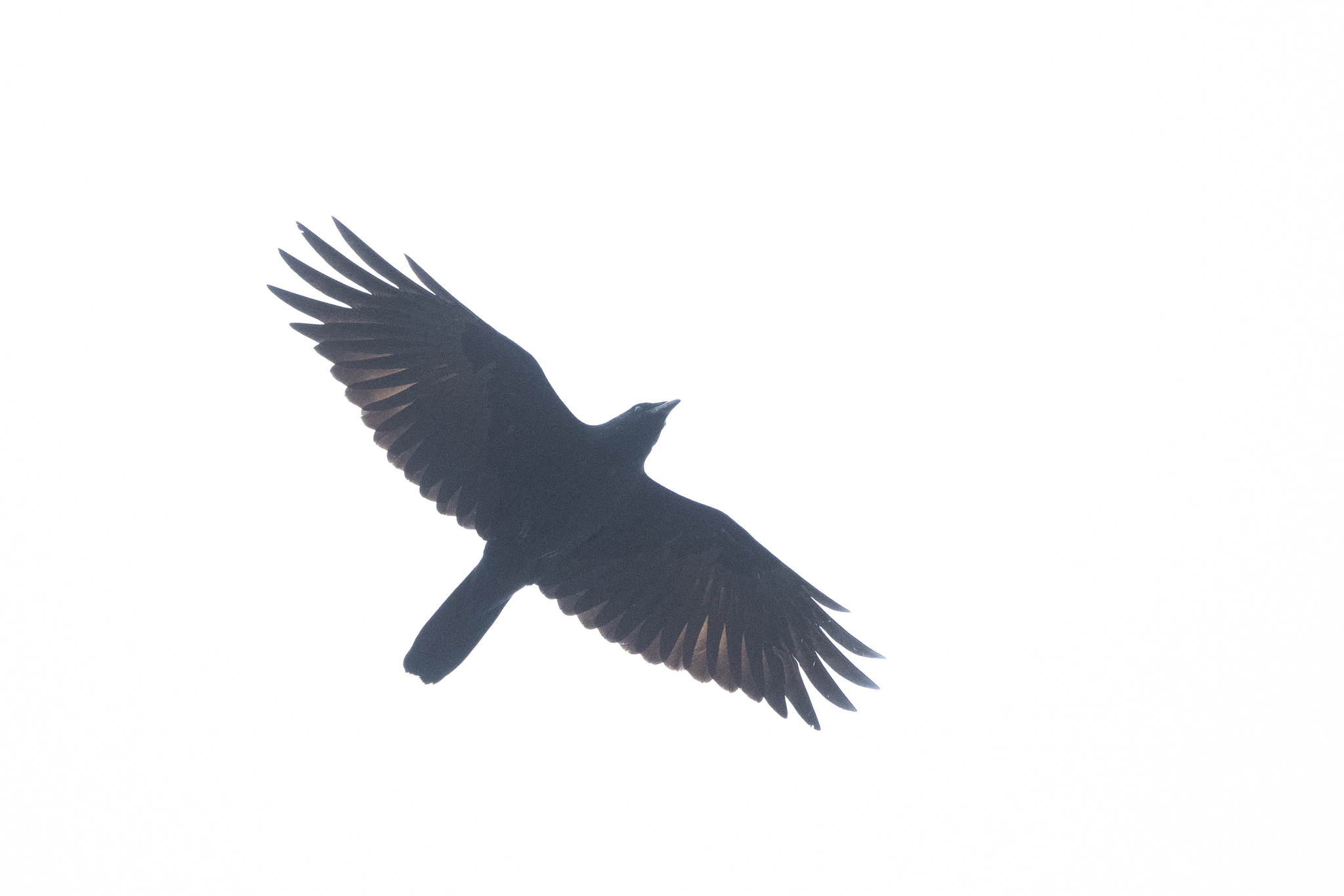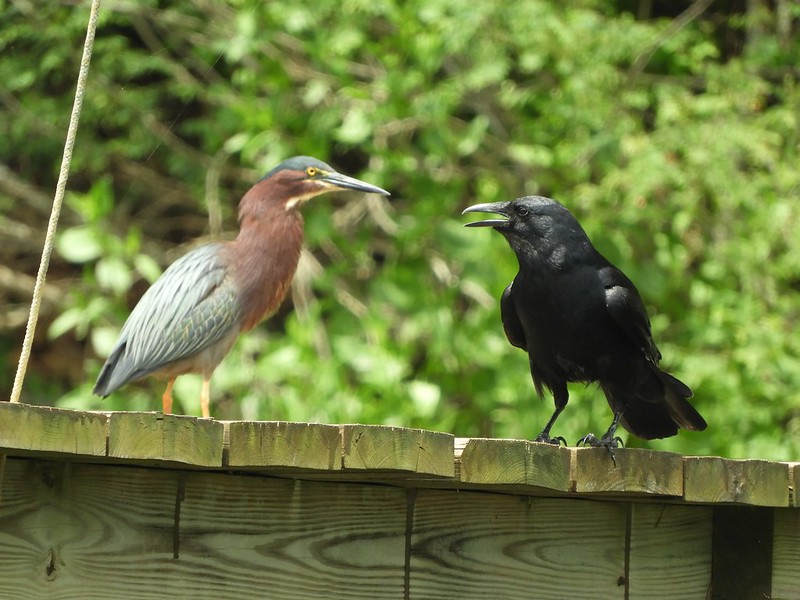Map Snapshot

























412 Records
Fish Crow in Montgomery Co., Maryland (3/11/2022). (c) Stephen John Davies, all rights reserved. - Stephen John Davies via iNaturalist.
Fish Crow in Montgomery Co., Maryland (5/12/2022). (c) David, some rights reserved (CC BY-NC-SA). - David via iNaturalist.
Fish Crow in Anne Arundel Co., Maryland (2/21/2023). (c) iibm360, some rights reserved (CC BY-NC). - iibm360 via iNaturalist.
Status
Easily found in all Maryland counties except Garrett Co., where it is very rare.
Description
Fish Crows are smaller than American Crows, have more pointed wings, and proportionally smaller and thinner bills. They can most easily be distinguished by their nasal vocalizations, which sound like "uh-uh." They are also far more common at Maryland landfills than American Crows.
Relationships
Steals eggs and nestlings from other birds.
Seasonality Snapshot
Source: Wikipedia
| Fish crow | |
|---|---|

| |
| In Red Hook, Brooklyn | |
| Scientific classification | |
| Domain: | Eukaryota |
| Kingdom: | Animalia |
| Phylum: | Chordata |
| Class: | Aves |
| Order: | Passeriformes |
| Family: | Corvidae |
| Genus: | Corvus |
| Species: | C. ossifragus
|
| Binomial name | |
| Corvus ossifragus Wilson, 1812
| |

| |
| Fish crow range | |
The fish crow (Corvus ossifragus) is a species of crow associated with wetland habitats in the eastern and southeastern United States.
Taxonomy and etymology
[edit]The fish crow was given its binomial name by the Scottish ornithologist Alexander Wilson in 1812, in the fifth volume of his American Ornithology.[3][4] The binomial is from Latin; Corvus means "raven", while ossifragus means "bone-breaker". It is derived from os or ossis, meaning "bone", and frangere, meaning "to break".[5] The English-language common name fish crow also derives from Wilson, who ascribed the name to the crow's aquatic diet, as described to him by local fishermen. He distinguished the fish crow from John Bartram's great seaside crow by the former's diminutive size when compared to the American crow.[3]
The fish crow's taxonomic relation to other species of the Corvus genus is still poorly understood, but DNA sequencing indicates that it is most closely related to the palm crow (C. palmarum) and the Jamaican crow (C. jamaicensis), with the three species forming a Nearctic clade.[6] The Sinaloa crow (C. sinaloae) and Tamaulipas crow (C. imparatus) bear morphological similarities to and were once considered conspecific subspecies of the fish crow,[7] but have since been recognized as distinct species.[8]
Description
[edit]
The fish crow is a small bird, with an average adult weight of 280–320 grams (9.9–11.3 oz) in males and 247–293 grams (8.7–10.3 oz) in females.[9] The average male wingspan is similarly larger at 278–292 millimetres (10.9–11.5 in), compared to 264–277 millimetres (10.4–10.9 in) in females.[10] The total body length is between 36–40 centimetres (14–16 in).[11]
The fish crow is superficially similar to the American crow, but is smaller and has a silkier, smoother plumage by comparison. The upperparts have a blue or blue-green sheen, while the underparts have a more greenish tint to the black. The eyes are dark brown. The differences are often only really apparent between the two species when seen side by side or when heard calling. The bill is usually somewhat slimmer than the American crow, but is only readily distinguishable if both species are seen together.[12]
Visual differentiation from the American crow is extremely difficult and often inaccurate.[13] Nonetheless, differences apart from size do exist. Fish crows tend to have more slender bills and feet. There may also be a small sharp hook at the end of the upper bill. Fish crows also appear as if they have shorter legs when walking. More dramatically, when calling, fish crows tend to hunch and fluff their throat feathers.
The voice is the most outwardly differing characteristic for this species and other American crow species. The call of the fish crow has been described as a nasal "ark-ark-ark" or a begging "waw-waw". Birders often distinguish the two species (in areas where their range overlaps) with the mnemonic aid "Just ask him if he is an American crow. If he says "no", he is a fish crow." referring to the fact that the most common call of the American crow is a distinct "caw caw", while that of the fish crow is a nasal "nyuh unh".[14] The fish crow also has a single call sounding like "cahrrr".[15]

Distribution and habitat
[edit]This species occurs on the eastern seaboard of the United States from Rhode Island south to Key West, and west along the northern coastline of the Gulf of Mexico. Coastal marshes and beaches, rivers, inland lakes and marshes, river banks, and the land immediately surrounding all are frequented.[12] Fish crows are also found along many river systems inland for quite some distance, having expanded their range along rivers since the early 1900s.[16] Since 2012, fish crows have rapidly expanded into Canada, with breeding populations along Lake Ontario.[17]
Behavior
[edit]
Diet
[edit]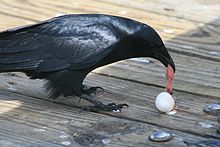
Food is taken mainly from the ground or shallow water where the bird hovers and plucks food items out of the water with its feet. The fish crow is omnivorous. It feeds on small crustaceans, such as crabs and shrimps, other invertebrates, stranded fish, and live fish if the situation favors their capture, eggs and nestlings of birds, small reptiles, the fruits of many trees, peanuts, and grains, as well as human scraps where available.[12]
Breeding
[edit]The nest is usually built high in a tree and is often accompanied in nearby trees with other nests of the same species forming small, loose colonies. Usually, four or five eggs are laid. Pale blue-green in colour, they bear blotches of olive-brown.[18] Fish crows build a new nest for each breeding attempt.[19] A pair of fish crows were reported to have raised a young blue jay for multiple weeks.[19]
Conservation
[edit]This species appears to be somewhat more resistant to West Nile virus than the American crow. Survival rates of up to 45% have been reported for fish crows, compared with near zero for American crows.[20]
References
[edit]- ^ BirdLife International (2016). "Corvus ossifragus". IUCN Red List of Threatened Species. 2016: e.T22705993A94045235. doi:10.2305/IUCN.UK.2016-3.RLTS.T22705993A94045235.en. Retrieved 12 November 2021.
- ^ "Corvus ossifragus". NatureServe Explorer. Retrieved 18 July 2024.
- ^ a b Wilson, Alexander (1812). American ornithology, or, The natural history of the birds of the United States. Vol. 5. Philadelphia, PA: Bradford and Inskeep. pp. 27–29. doi:10.5962/bhl.title.97204. LCCN 11004314. OCLC 4961598. Retrieved 12 December 2021.
- ^ Burns, Frank L. (1909). "Alexander Wilson. VI: His Nomenclature". The Wilson Bulletin. 21 (3): 132–151. ISSN 0043-5643. JSTOR 4154253. Retrieved 12 December 2021.
- ^ Jobling, James A. (2010). The Helm dictionary of scientific bird names : from aalge to zusii. London: Christopher Helm. pp. 119, 286. ISBN 978-1-4081-2501-4. Retrieved 12 December 2021.
- ^ Haring, Elisabeth; Däubl, Barbara; Pinsker, Wilhelm; Kryukov, Alexey; Gamauf, Anita (August 2012). "Genetic divergences and intraspecific variation in corvids of the genus Corvus (Aves: Passeriformes: Corvidae) – a first survey based on museum specimens". Journal of Zoological Systematics and Evolutionary Research. 50 (3): 230–246. doi:10.1111/j.1439-0469.2012.00664.x. Retrieved 12 December 2021.
- ^ Hellmayr, Charles E. (1934). Catalogue of birds of the Americas and the adjacent islands. Vol. 13. Chicago, IL: Field Museum of Natural History. pp. 5–7. OCLC 13897940. Retrieved 12 December 2021.
- ^ Hardy, John William (1990). "The Fish Crow (Corvus ossifragus) and its Mexican relatives: vocal cues to evolutionary relationships?" (PDF). Florida Field Naturalist. 18 (4): 74–80. Retrieved 12 December 2021.
- ^ Baumel, Julian J. (1957). "Individual Variation in the Fish Crow, Corvus ossifragus". The Auk. 74 (1): 73–78. doi:10.2307/4082030. ISSN 0004-8038. JSTOR 4082030.
- ^ Johnston, David W. (1961). The Biosystematics of American Crows. Seattle, WA: University of Washington Press. ISBN 978-0-295-73724-9.
- ^ McGowan, Kevin J. (2020). "Fish Crow (Corvus ossifragus)". In Poole, A. F.; Gill, F. B. (eds.). Birds of the World. Ithaca, NY: Cornell Lab of Ornithology. doi:10.2173/bow.fiscro.01. Retrieved 12 December 2021.
- ^ a b c Goodwin, p. 92
- ^ Cornell Lab of Ornithology, Fish Crow – Physical Characters
- ^ Cornell Lab of Ornithology, Fish Crow – Voice
- ^ "Fish Crow ID".
- ^ Jorgenson, Joel P.; Panella, Melissa J.; Silcock, W.Ross; Stoner, Kristal J. (1 December 2009). "The Fish Crow (Corvus ossifragus) Reaches Nebraska". Nebraska Bird Review.
- ^ "Ontario Breeding Bird Atlas". www.birdsontario.org. Retrieved 5 September 2023.
- ^ Goodwin, p. 93
- ^ a b "Fish Crow". TheCornellLab. Retrieved 24 May 2021.
- ^ "West Nile and Ravens". Rhode Island Department of Environmental Management. Archived from the original on 9 September 2014. Retrieved 28 April 2014.
Further reading
[edit]- Goodwin D. (1983). Crows of the World. Queensland University Press, St Lucia, Qld. ISBN 0-7022-1015-3.
External links
[edit]- Differences between American and Fish Crows
- Fish Crow videos from the Cornell Lab of Ornithology's Macaulay Library
- Page from The Cornell Lab of Ornithology
- Citizen science observations for Fish crow at iNaturalist
